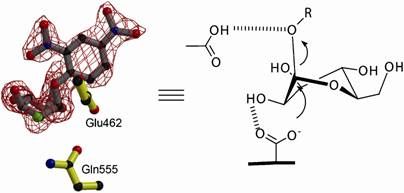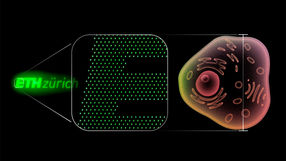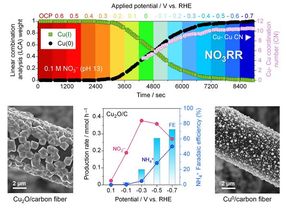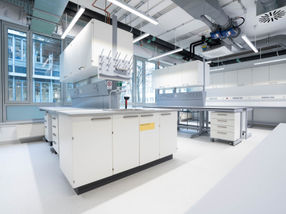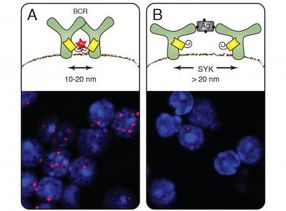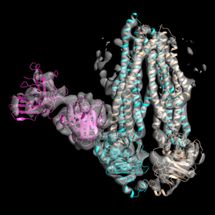Catalyst-free chemistry makes self-healing materials more practical
Advertisement
A new catalyst-free, self-healing material system developed by researchers at the University of Illinois offers a far less expensive and far more practical way to repair composite materials used in structural applications ranging from airplane fuselages to wind-farm propeller blades. The new self-healing system incorporates chlorobenzene microcapsules, as small as 150 microns in diameter, as an active solvent. The expensive, ruthenium-based Grubbs' catalyst, which was required in the researchers' first approach, is no longer needed. "By removing the catalyst from our material system, we now have a simpler and more economical alternative for strength recovery after crack damage has occurred," said Jeffrey Moore, the Murchison-Mallory Professor of chemistry at Illinois. "Self-healing of epoxy materials with encapsulated solvents can prevent further crack propagation, while recovering most of the material's mechanical integrity." During normal use, epoxy-based materials experience stresses that can cause cracking, which can lead to mechanical failure. Autonomous self-healing - a process in which the damage itself triggers the repair mechanism - can retain structural integrity and extend the lifetime of the material. "Although we demonstrated the self-healing concept with a ruthenium-based catalyst, the cost of the catalyst made our original approach too expensive and impractical," said Moore, who also is affiliated with the university's Frederick Seitz Materials Research Laboratory and with the Beckman Institute. "Our new self-healing system is simple, very economical and potentially robust." In the researchers' original approach, self-healing materials consisted of a microencapsulated healing agent (dicyclopentadiene) and Grubbs' catalyst embedded in an epoxy matrix. When the material cracked, microcapsules would rupture and release the healing agent, which then reacted with the catalyst to repair the damage. In their new approach, when a crack forms in the epoxy material, microcapsules containing chlorobenzene break. The solvent disperses into the matrix, where it finds pockets of unreacted epoxy monomers. The solvent then carries the latent epoxy monomers into the crack, where polymerization takes place, restoring structural integrity. In fracture tests, self-healing composites with catalyst-free chemistry recovered as much as 82 percent of their original fracture toughness. The new catalyst-free chemistry has taken down the barriers to cost and level of difficulty, Moore said. "From an economics and simplicity standpoint, self-healing materials could become part of everyday life." Original publication: Macromolecules 2007.
Most read news
Topics
Organizations
Other news from the department science

Get the chemical industry in your inbox
By submitting this form you agree that LUMITOS AG will send you the newsletter(s) selected above by email. Your data will not be passed on to third parties. Your data will be stored and processed in accordance with our data protection regulations. LUMITOS may contact you by email for the purpose of advertising or market and opinion surveys. You can revoke your consent at any time without giving reasons to LUMITOS AG, Ernst-Augustin-Str. 2, 12489 Berlin, Germany or by e-mail at revoke@lumitos.com with effect for the future. In addition, each email contains a link to unsubscribe from the corresponding newsletter.



